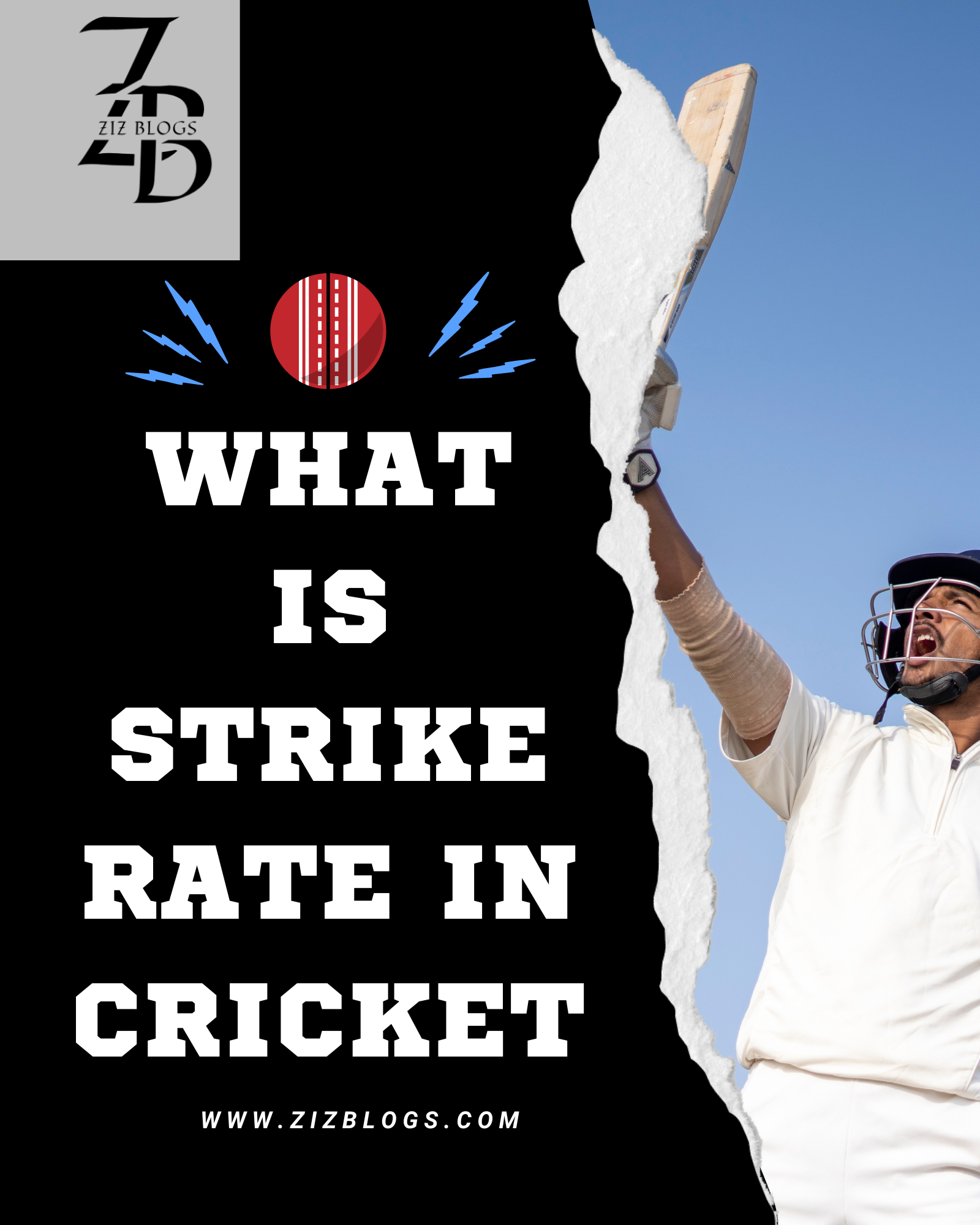What is Strike Rate in Cricket
Cricket is a sport rich in statistical measures that help assess player performance and team strategies. One such measure is strike rate, but what is strike rate in cricket. It holds significant importance in evaluating a batsman’s effectiveness during a match. Understanding what is strike rate is crucial for players, coaches, and fans alike as it provides insights into the tempo and efficiency of a batsman’s scoring.
Definition of Strike Rate
Strike rate in cricket is a statistical metric that quantifies a batsman’s scoring ability. It represents the number of runs scored by a batsman per 100 balls faced. Essentially, it measures how quickly a batsman accumulates runs relative to the number of deliveries they have faced. For example, a strike rate of 100 indicates that a batsman scores one run per ball faced, while a strike rate of 150 implies that the batsman scores 1.5 runs per ball faced.
Calculation of Strike Rate
The calculation of strike rate is relatively straightforward. It involves dividing the total number of runs scored by a batsman by the total number of balls faced and then multiplying the result by 100 to express it as a percentage. The formula for strike rate can be expressed as follows:
Strike Rate = ( Total Runs ÷Total Balls Faced ) * 100
This formula provides a standardized way to quantify a batsman’s scoring rate, allowing for easy comparison across different matches and formats of the game.
Significance of Strike Rate
Strike rate holds immense significance in cricket, serving as a key indicator of a batsman’s impact on the game. It provides valuable insights into the pace and aggression of a team’s innings, influencing strategic decisions made by players and coaches.
Importance in Limited-Overs Cricket
In limited-overs cricket, such as One Day Internationals (ODIs) and Twenty20 (T20) matches, strike rate plays a particularly vital role. The fast-paced nature of these formats necessitates aggressive and dynamic batting to set competitive totals or chase down targets within a limited number of overs. A high strike rate indicates that a batsman is scoring quickly, putting pressure on the opposition and increasing the likelihood of success for their team.
Importance in Test Cricket

While strike rate is less emphasized in Test cricket compared to limited-overs formats, it still holds significance in certain contexts. In Test matches, where the focus is on building innings and occupying the crease for extended periods. The strike rate may be lower overall. However, there are situations where an increased strike rate becomes crucial. Such as when accelerating the run rate to set up a declaration or counterattacking to shift momentum in the game.
Factors Influencing Strike Rate
Several factors can influence a batsman’s strike rate, ranging from individual batting style and technique to external conditions such as pitch and weather.
Batting Style and Technique

The batting style and technique of a player play a significant role in determining their strike rate. Aggressive and attacking batsmen who are adept at playing aggressive shots tend to have higher strike rates compared to those who adopt a more defensive approach. Factors such as shot selection, footwork, and ability to rotate the strike can all impact a batsman’s scoring rate.
Pitch Conditions

The conditions of the pitch also have a considerable influence on a batsman’s strike rate. A flat and true pitch with even bounce and pace is conducive to aggressive stroke play. By allowing batsmen to score quickly with confidence. In contrast, a pitch with variable bounce, excessive seam movement, or significant turn may require batsmen to adopt a more cautious approach. It can result in a lower strike rate.
Weather Conditions

Weather conditions, such as heat, humidity, and wind, can affect a batsman’s ability to score runs at a brisk pace. Hot and humid weather conditions may lead to fatigue and dehydration. By impacting a player’s endurance and concentration levels, thereby potentially reducing their strike rate. Similarly, strong winds can affect ball movement and trajectory, making shot execution more challenging for batsmen.
Understanding these factors is essential for players and coaches to adapt their strategies accordingly. And to optimize their batting performance in different situations. By analyzing strike rates in conjunction with other statistical measures. Teams can formulate effective game plans and make informed decisions to achieve success on the cricket field.

